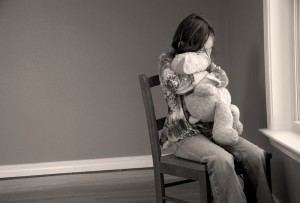

Adolescence can present challenges that are unique to girls.
My last blog (Boys, don’t cry!) addressed the many challenges that can present themselves to boys during childhood and adolescence, and cause them to veer off the road from healthy development. Girls by no means have it easy! When compared to boys, girls are more likely to present with mental health problems (Merikangas, 2010). Furthermore, although both sexes are susceptible to sexually transmitted diseases, the repercussions of forgetting that condom can hold more disastrous consequences for girls, with the risk of an unwanted pregnancy.
Intervention programs can have contrasting outcomes for boys and girls, so it is timely to see the publication of two Child Trends’ Factsheets that deal separately with boys and girls. Each one summarises a separate systematic review investigating the impacts of non-school social intervention programs on improving outcomes for children and adolescents. This review deals specifically with girls.
What they did
The authors carried out a systematic review of the current literature available from the LINKS Database, which uncovered 106 studies that met the following inclusion criteria:
- Randomised trials of female children and/or adolescents that include an intention-to-treat analysis
- Co-ed interventions that provide impact data specifically for female children and adolescents
- A minimum of 100 girls in each evaluation sample
Nine outcome areas were identified:

Girls are more likely than boys to report mental health problems.
- Academic Achievement (e.g. national test results)
- Delinquency (e.g. violence, crime or arrests)
- Externalising or Acting out behaviours (e.g. aggression or hyperactivity)
- Mental Health/Internalising (e.g. depression, anxiety, eating disorder or suicide)
- Physical Health & Nutrition (e.g.diet, BMI, weight or physical activity)
- Reproductive Health & Sexuality (e.g. sexual activity, contraceptive use or pregnancy)
- Self-sufficiency (e.g. employment, earnings or welfare claims)
- Social Skills (e.g. relationship building, conflict resolution or empathy)
- Substance Misuse
The authors categorised the effect of the programs according to their impact on the outcome areas, as either:
- Found to work
- Mixed findings
- Not found to work
What they found

Almost half of the interventions in the review reported positive outcomes for girls.
Almost half of the programs included in the study had a positive impact on girls’ wellbeing, behaviour or achievement. They did not find any one program that worked across all outcome measures, but some themes came to light. In summary, for female children and adolescents:
- 51 of the 106 programs had a positive impact on at least one outcome reviewed
- 27 programs had mixed findings
- 28 programs had no positive impacts
[table id=2 /]
The authors concluded
This review of experimental evaluations indicates that social interventions can have positive impacts on the well-being of girls and young women. Interventions in some outcome areas, such as physical health, were generally found to be successful, while for other outcome areas, including reproductive health and problem behaviors, it seems more difficult to achieve positive impacts.
We found that including parents in interventions in some way led to desirable impacts for boys’ and girls’ mental health outcomes. We also found that, for reproductive health outcomes, most school-based programs did not work for boys or girls.
There were also meaningful differences between what worked for girls and for boys in certain outcome areas. For example, while one-on-one interventions often led to positive impacts for girls’ reproductive health outcomes, experiential learning activities that included group activities were often effective for boys. Similarly, while social skills training interventions were not generally successful for boys in reducing delinquency outcomes, these types of interventions were often successful in reducing externalizing behaviors in girls. However, the number of studies is too small for these patterns to be more than suggestive.
Given these findings, continuing to assess which strategies work best for both girls and boys appears to be an important task for future research to undertake.
The Education Elf’s View
 They say, ‘What doesn’t kill you makes you stronger’. To be honest, I have never really subscribed to that theory. In reality, often what doesn’t kill you can have long-term detrimental affects on wellbeing. In an ideal world, maybe we could protect our children and teens from the challenges that can threaten their health, happiness and relationships. Or, maybe life’s obstacles do help us to learn coping strategies for the next time they rear their ugly heads. Oh dear, we are back to the original cliché! Maybe, what doesn’t kill you, and also doesn’t have permanent and serious negative impacts, can teach you and prepare you for future mishaps. Hmm, I may be going round in circles, but one thing I know for sure is that we have a responsibility to provide our young elves and people with coping strategies to give them the very best chance of successful life outcomes.
They say, ‘What doesn’t kill you makes you stronger’. To be honest, I have never really subscribed to that theory. In reality, often what doesn’t kill you can have long-term detrimental affects on wellbeing. In an ideal world, maybe we could protect our children and teens from the challenges that can threaten their health, happiness and relationships. Or, maybe life’s obstacles do help us to learn coping strategies for the next time they rear their ugly heads. Oh dear, we are back to the original cliché! Maybe, what doesn’t kill you, and also doesn’t have permanent and serious negative impacts, can teach you and prepare you for future mishaps. Hmm, I may be going round in circles, but one thing I know for sure is that we have a responsibility to provide our young elves and people with coping strategies to give them the very best chance of successful life outcomes.
This review, along with its partner review about boys, only starts to scratch the surface of evidence-based practice in this field. Further research is required to gain deeper insights into what works to improve outcomes for both girls and boys. I’m pretty sure that parents, policy makers and educators will welcome some harder evidence to inform their practice.
My previous blog, ‘Boys, don’t cry!’ provides a discussion about the methodological limitations of the partner systematic review, which is also relevant to this review.
Links
Bell K, Terzian MA and Moore KA What works for female children and adolescents: Lessons from Experimental Evaluations of Programs and Interventions (PDF) Child Trends Fact Sheet Publication (2012)
Merikangas KR, He J, Burstein M, Swanson SA, Avenevoli S, Cui L, Benjet C, Georgiades K, Swendsen J Lifetime prevalence of mental disorders in U.S. adolescents: Results from the National Comorbidity Study Adolescent (2010) Supplement (NCS-A). Journal of the American Academy of Child and Adolescent Psychiatry. 49 (10): 980-98
